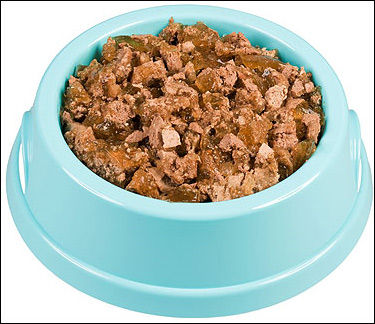WCF 新手求教
SERVICE 部分using System;
using System.Collections.Generic;
using System.Linq;
using System.Runtime.Serialization;
using System.ServiceModel;
using System.Text;
namespace WcfServiceLibrary1
{
// NOTE: You can use the "Rename" command on the "Refactor" menu to change the interface name "IService1" in both code and config file together.
[ServiceContract]
public interface IService1
{
[OperationContract]
string GetData(int value);
[OperationContract]
CompositeType GetDataUsingDataContract(CompositeType composite);
// TODO: Add your service operations here
}
// Use a data contract as illustrated in the sample below to add composite types to service operations
[DataContract]
[ServiceKnownType(typeof(CompositeType))]
public class CompositeType
{
bool boolValue = true;
string stringValue = "Hello ";
[DataMember]
public bool BoolValue
{
get { return boolValue; }
set { boolValue = value; }
}
[DataMember]
public string StringValue
{
get { return stringValue; }
set { stringValue = value; }
}
}
}
using System;
using System.Collections.Generic;
using System.Linq;
using System.Runtime.Serialization;
using System.ServiceModel;
using System.Text;
namespace WcfServiceLibrary1
{
// NOTE: You can use the "Rename" command on the "Refactor" menu to change the class name "Service1" in both code and config file together.
public class Service1 : IService1
{
public string GetData(int value)
{
return string.Format("You entered: {0}", value);
}
public CompositeType GetDataUsingDataContract(CompositeType composite)
{
if (composite == null)
{
throw new ArgumentNullException("composite");
}
if (composite.BoolValue)
{
composite.StringValue += "Suffix";
}
return composite;
}
}
}
CLIENT部分:
using System;
using System.Collections.Generic;
using System.Linq;
using System.Text;
namespace ConsoleApplication1
{
class Program
{
static void Main(string[] args)
{
ServiceReference1.Service1Client client = new ServiceReference1.Service1Client();
ServiceReference1.CompositeType ct = new ServiceReference1.CompositeType();
client.GetDataUsingDataContract(ct);
Console.WriteLine(ct.StringValue);
}
}
}
为什么 ServiceReference1.CompositeType ct = new ServiceReference1.CompositeType();
ct.BoolValue 不是 true ,是false?
ct.StringValue 不是 "Hello",是NULL? --------------------编程问答-------------------- client.GetDataUsingDataContract(ct);
为什么不是引用传递? --------------------编程问答-------------------- --------------------编程问答-------------------- bool boolValue = true;
string stringValue = "Hello ";
并没有在你的代理类里生成。非公开字段且不是DataMember属性,不会被序列化。 --------------------编程问答-------------------- 有兴趣看看这篇,说得很详细:
http://www.cnblogs.com/artech/archive/2007/03/10/669874.html --------------------编程问答--------------------
明白了
那,
client.GetDataUsingDataContract(ct);
为什么不是引用传递?而是类似值传递? --------------------编程问答-------------------- --------------------编程问答-------------------- client.GetDataUsingDataContract(ct);
为什么不是引用传递?而是类似值传递?
==========
没明白什么意思。。。怎么看出来是值传递?
(想讨论引用传递还是值传递,最好换个示例)
ct.StringValue = "Hello";
ct.BoolValue = true;
var result = client.GetDataUsingDataContract(ct);
--------------------编程问答-------------------- CLIENT 调用:
ct.StringValue = "Hello";
ct.BoolValue = true;
var result = client.GetDataUsingDataContract(ct);
调用后:
result.StringValue = "HelloSuffix";
但是 还是
ct.StringValue = "Hello";
CT不用OUT和REF,也应该是HelloSuffix 吧???
--------------------编程问答-------------------- 所以说你要想研究值类型还是引用类型的区别不要用这个做例子...
这个过程很复杂。。。
ct.StringValue = "Hello";
ct.BoolValue = true;
---------> 这里为止,ct是客户端实例
var result = client.GetDataUsingDataContract(ct); --> ct序列化到服务端
此处省略一千字...
服务端反序列化这个对象然后赋值,然后return,然后再序列化。
客户端拿到再反序列化,即在客户端重新生成个对象。
也就是说客户端的ct和服务端composite不是一个引用。
(本来也不是,分别在两边的内存里)
WCF建立这样一个机制,通过序列化和反序列化,让编程者使用起来好像没有
跨进程的差异,都像是在操作一个对象而已。
--------------------编程问答-------------------- 俺也是新手。。。赐教 --------------------编程问答--------------------
大概明了。。。同时也理解序列化和反序列化,看描述不太理解,被你这么一说,清晰很多。
谢谢大大 --------------------编程问答-------------------- 当然WCF不是序列化反序列化这么简单。我只是想告诉你客户端对象和服务端对象是两个不同的实例。
另外你可以把方法加上 ref 再试试。呵呵。
补充:.NET技术 , C#




